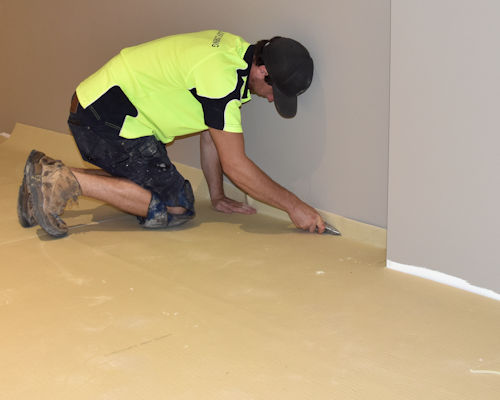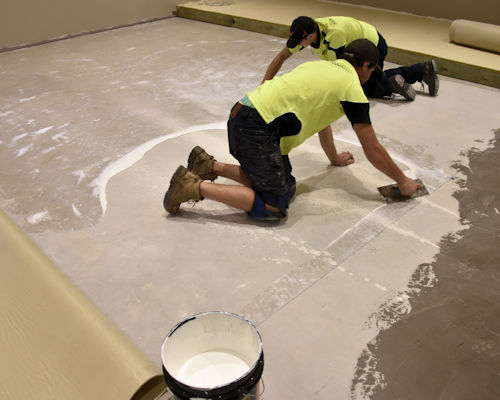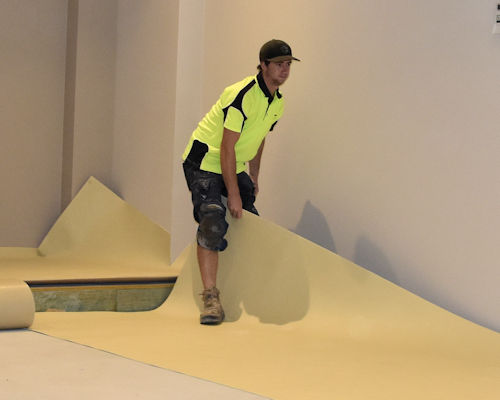Underlay
 Audio for slide 2 (mp3 |6|KB)
Audio for slide 2 (mp3 |6|KB)
To avoid any problems in your installations, you should always use the underlay specified by the carpet tile manufacturer.
Note that broadloom carpet underlays are not suitable for tiles. Some manufacturers also don't recommend the use of a separate underlay at all.
Problems that can occur if you use the wrong underlay include: curling of tile edges, wrinkling of tiles over time, and movement of individual tiles. You may also void the warranty offered by the manufacturer if you don't use the recommended underlay.

 Audio for slide 3 (mp3 |6|KB)
Audio for slide 3 (mp3 |6|KB)
Most installations that incorporate an underlay are carried out using a dual bond system. The underlay can either be stuck down with a full-spread adhesive or with an embedded 'peel and stick' adhesive on the back of the underlay.
On subfloors that have ridges, grooves or other imperfections, a hard underlay can be used to achieve a smooth flat surface.
These include products such as MDF (medium density fibreboard) and fibre cement sheets. The Australian Standard describes the installation requirements for hard underlays in AS/NZS 2455.1; Clause 1.5.2 Underlays.







